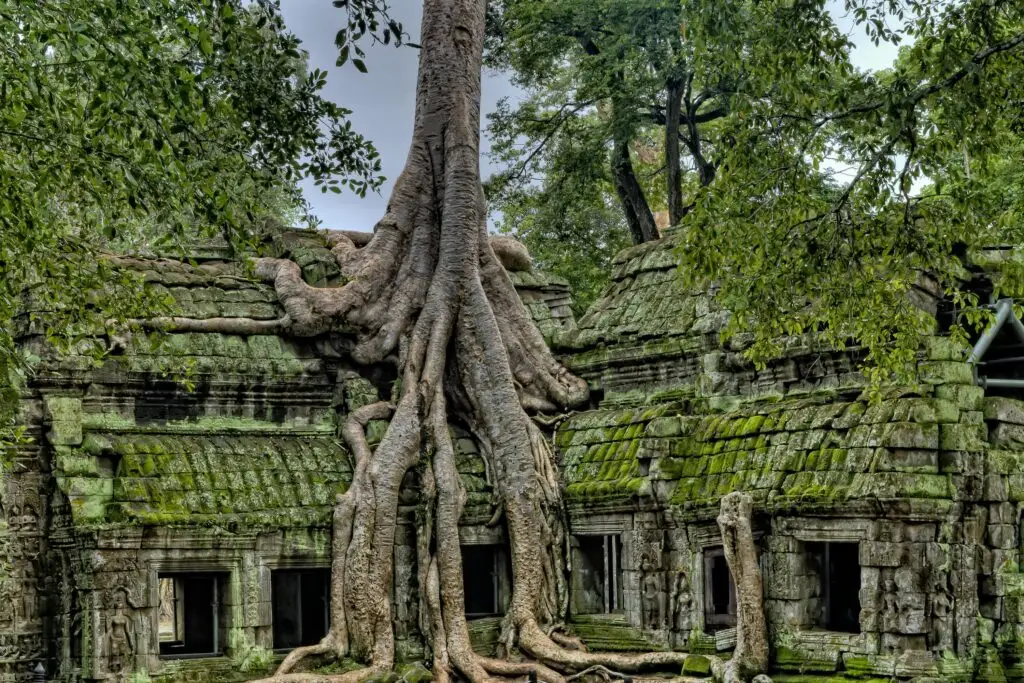
Cambodia, a Southeast Asian country rich in history, culture, and natural beauty, is a destination that offers a blend of ancient temples, bustling cities, lush landscapes, and pristine beaches. Here’s a travel description highlighting some of the best tourist spots in Cambodia:
Angkor Wat (Siem Reap)
The crown jewel of Cambodia, Angkor Wat is the largest religious monument in the world and a UNESCO World Heritage Site. Built in the early 12th century, this temple complex is renowned for its intricate carvings, grand architecture, and spiritual significance. Visitors often explore Angkor Thom and the Bayon Temple, famous for its enigmatic stone faces, and Ta Prohm, the “Tomb Raider Temple,” enveloped by jungle trees.
Phnom Penh
The vibrant capital city of Cambodia, Phnom Penh is a blend of traditional culture and modern development. Key attractions include:
- Royal Palace and Silver Pagoda: The royal residence, known for its stunning architecture and silver-tiled pagoda.
- Tuol Sleng Genocide Museum and Killing Fields of Choeung Ek: Sobering reminders of Cambodia’s tragic past during the Khmer Rouge regime.
- Sisowath Quay: A riverside promenade filled with cafes, markets, and restaurants.
Sihanoukville and the Southern Islands
Sihanoukville is the gateway to Cambodia’s southern coastline and islands, ideal for beach lovers. From here, explore:
- Koh Rong: Known for its white sandy beaches, crystal-clear waters, and vibrant marine life, perfect for snorkeling and diving.
- Koh Rong Samloem: A quieter, more tranquil island with pristine nature and secluded beaches.
- Otres Beach: A laid-back coastal spot in Sihanoukville, great for relaxing and water sports.
Battambang
A charming city located along the Sangkae River, Battambang is known for its French colonial architecture and rich cultural scene. Key attractions include:
- Phnom Sampeau: A mountain with caves used as killing fields during the Khmer Rouge regime, now home to temples and stunning views.
- Bamboo Train (Norry): A unique experience of riding a bamboo platform on old train tracks through the countryside.
- Wat Banan: An ancient hilltop temple offering panoramic views of the region.
Kampot and Kep
Nestled along the southern coast, these two towns are known for their laid-back atmosphere and stunning natural beauty.
- Kampot: Famous for its pepper plantations and the nearby Bokor National Park, with old colonial ruins, cool mountain air, and lush forests.
- Kep: A small seaside town known for its crab market and nearby islands, including Koh Tonsay (Rabbit Island), offering quiet beaches and crystal-clear waters.
Tonle Sap Lake
Southeast Asia’s largest freshwater lake, Tonle Sap is a vital resource for the people of Cambodia and is home to floating villages such as Kompong Phluk and Chong Kneas. Visitors can take boat tours to explore the unique stilted houses, floating schools, and local fisheries.
Ratanakiri and Mondulkiri (Northeastern Cambodia)
For adventurous travelers, the remote regions of Ratanakiri and Mondulkiri offer unspoiled natural beauty, waterfalls, and indigenous cultures.
- Ratanakiri: Visit Yak Lom Crater Lake, a serene volcanic lake surrounded by jungle, and Virachey National Park, a vast wilderness filled with wildlife and opportunities for trekking.
- Mondulkiri: Known for its rolling hills and elephant conservation projects, it’s a great place for nature treks and eco-tourism.
Preah Vihear Temple
Located on a cliff in the Dângrêk Mountains, Preah Vihear is an ancient Hindu temple complex with stunning views over the Cambodian plains. It’s a UNESCO World Heritage Site and less visited than Angkor Wat, offering a more serene experience.
Kratie
A charming riverside town, Kratie is the best place to see the endangered Irrawaddy dolphins. Take a boat trip along the Mekong River to spot these unique freshwater dolphins and explore the surrounding countryside and traditional Khmer villages.
Cardamom Mountains
For eco-adventurers, the Cardamom Mountains in southwest Cambodia offer lush rainforests, wildlife, and hiking opportunities. The area is relatively undeveloped and provides a great chance to experience Cambodia’s untouched nature, with visits to waterfalls, remote villages, and wildlife reserves.
Cultural Tips:
- Cuisine: Don’t miss the opportunity to try amok (fish cooked in coconut milk), lok lak (stir-fried beef), and various street food dishes.
- Best time to visit: The best time to visit Cambodia is from November to March, when the weather is dry and cooler.
With its remarkable blend of ancient temples, cultural experiences, and natural beauty, Cambodia offers a unique and unforgettable travel experience.

